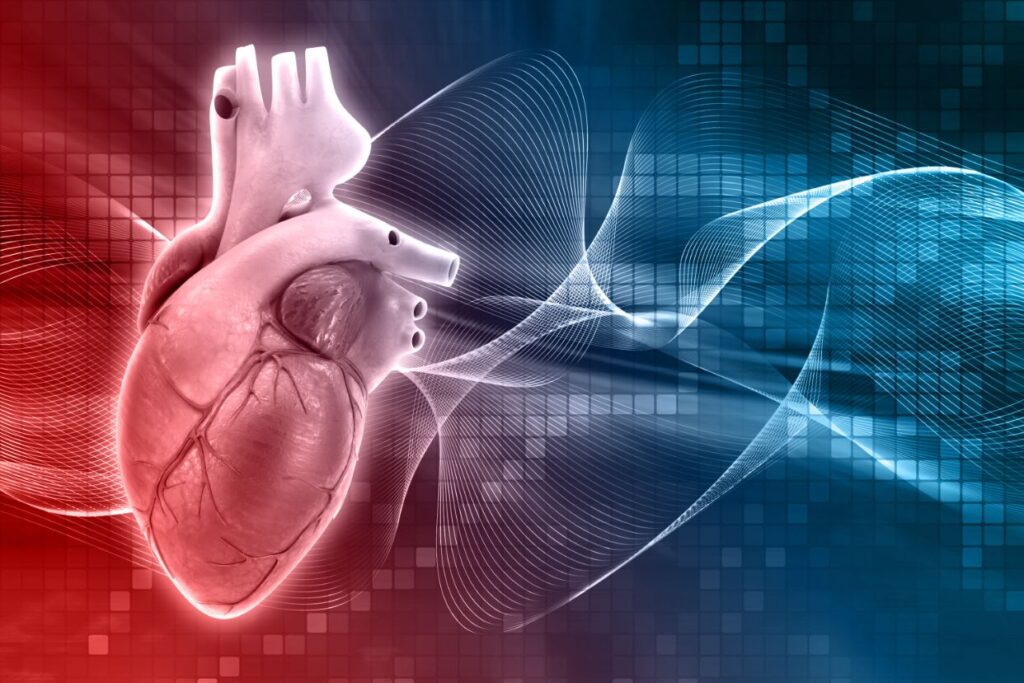Maintaining good heart and lung health is crucial for overall well-being. The heart and lungs are two of the most vital organs in the body and work together to ensure oxygen delivery to the body. Therefore, the connection between heart and lung health cannot be overstated. In this blog, Dr. Jasdeep Sidana will help explore the connection between the heart and lungs, how heart and lung diseases are connected, and how to maintain good heart and lung health.
Anatomy and Function of the Heart and Lungs
To understand the connection between heart and lung health, Dr. Jasdeep Sidana suggests we must first understand the anatomy and function of the heart and lungs. The muscular heart pumps blood throughout the body, delivering oxygen and nutrients to cells and removing waste products. On the other hand, the lungs are responsible for breathing in oxygen and removing carbon dioxide from the body.
The heart and lungs work together to ensure oxygen delivery to the body. Blood rich in oxygen is pumped from the heart to the lungs, then oxygenated. Oxygen-rich blood is then carried back to the heart and pumped to the rest of the body.

How Heart and Lung Health are Connected
According to Dr. Jasdeep Sidana, the heart, and lungs are connected in several ways. First, the heart is crucial in delivering oxygen to the lungs. It pumps oxygen-poor blood to the lungs, which are oxygenated and returned to the heart. The lungs, in turn, filter blood and remove carbon dioxide, which is then expelled from the body through exhalation.
Heart and lung diseases can also affect each other. For example, if the heart is not functioning correctly, it may not be able to pump enough blood to the lungs. This can lead to low oxygen levels in the blood and cause shortness of breath. Similarly, if the lungs are not functioning properly, they may be unable to filter blood effectively, leading to an increased workload on the heart.
The Impact of Heart and Lung Diseases on Each Other
Heart and lung diseases are intricately connected and can significantly impact each other. In addition, several conditions can affect both organs, leading to a complex interplay that can affect overall health and well-being.
One such disease is chronic obstructive pulmonary disease (COPD), a progressive lung disease that can lead to difficulty breathing and reduced lung function. COPD can also lead to high lung blood pressure, a condition known as pulmonary hypertension. This can cause the heart to work harder in pumping blood into the lungs, leading to an increased workload on the heart. Over time, this can cause the heart to weaken, leading to heart failure.
On the other hand, heart disease can also impact the lungs. When the heart is not pumping blood effectively, fluid can accumulate in the lungs, causing pulmonary edema. This can lead to shortness of breath, coughing, and wheezing. If left untreated, pulmonary edema can cause significant damage to the lungs and impair breathing function.
Another example of the interplay between heart and lung diseases is pulmonary embolism, where a blood clot blocks blood flow in the lungs. This can cause strain on the right side of the heart, leading to an increased risk of heart failure.
Moreover, other lung diseases, such as pneumonia and asthma, can also impact the heart. For example, pneumonia can lead to lung inflammation, increasing the workload on the heart. Asthma, on the other hand, can cause constriction of the airways, making it more difficult for the heart to pump oxygen-rich blood to the rest of the body.

Preventing Heart and Lung Diseases
Maintaining good heart and lung health requires a combination of healthy lifestyle choices and medical interventions. Here are some steps you can take to keep your heart and lungs healthy:
- Quit smoking: Smoking is a leading cause of heart and lung disease. Quitting smoking can help reduce the risk of developing these diseases.
- Exercise regularly: Regular exercise helps keep your heart and lungs strong. Dr. Jasdeep Sidana recommends getting at least 30 minutes of moderate exercise five days a week.
- Eat a healthy diet: Eating a balanced diet is essential for heart and lung health. Dr. Jasdeep Sidana recommends eating plenty of fruits and vegetables, whole grains, lean proteins, and healthy fats.
- Get regular medical check-ups: Regular check-ups can help catch any underlying conditions early, allowing for more effective treatment. Dr. Jasdeep Sidana suggests seeing your doctor at least once a year for a check-up.
Following Dr. Jasdeep Sidana’s advice, you can help keep your heart and lungs healthy and reduce the risk of developing diseases affecting both organs. With proper lifestyle choices and regular medical care, you can ensure that your heart and lungs remain in top condition.
Conclusion
In conclusion, Dr. Jasdeep Sidana stresses the importance of good heart and lung health for overall well-being. By understanding how the two organs work together, you can take steps to ensure your heart and lungs remain healthy. With regular check-ups, a healthy lifestyle, and proper medical care, you can help keep your heart and lungs functioning properly.


